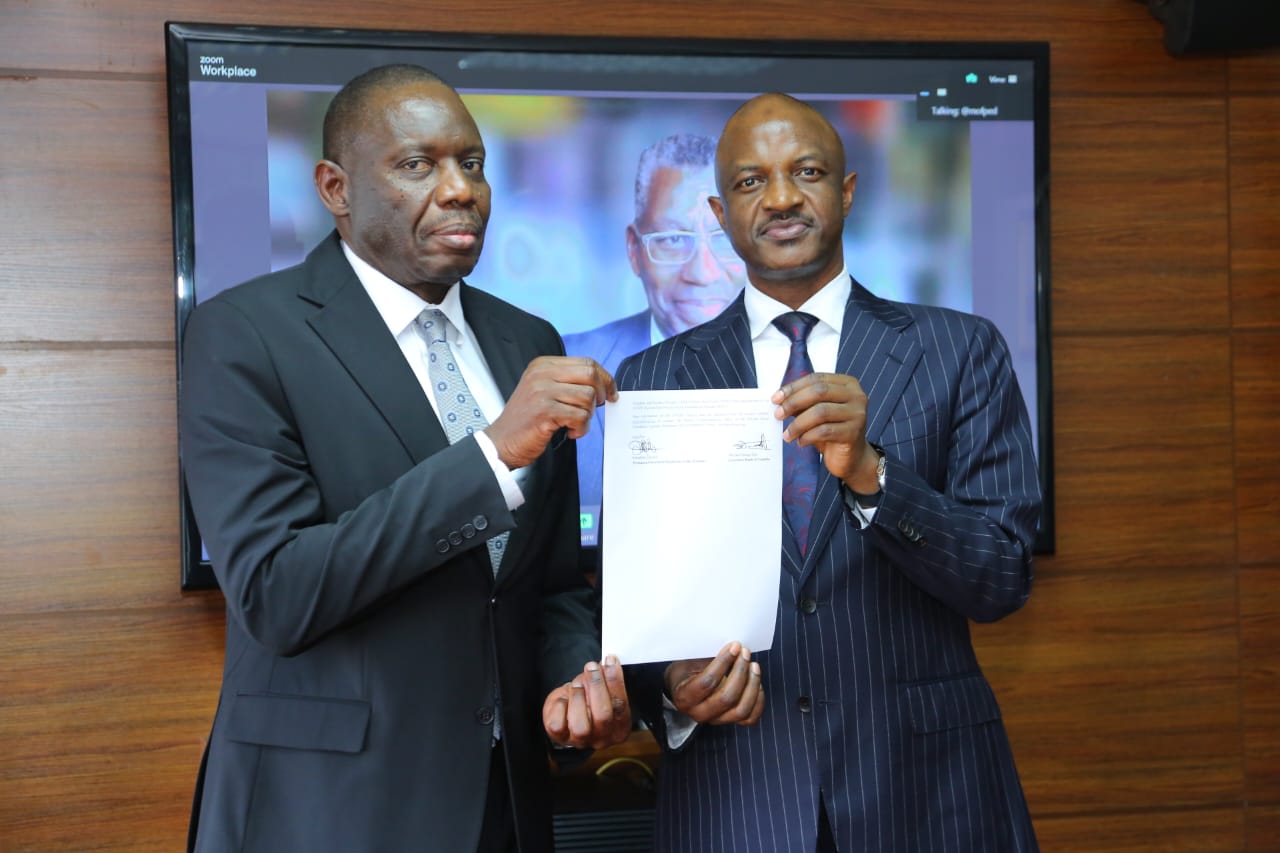By Gloria Sebikari, Manager Corporate Affairs, Petroleum Authority of Uganda
Uganda’s Petroleum sector dominated the headlines during the first quarter of 2025, with landmark achievements.
The East African Crude Oil Pipeline (EACOP) project secured the first tranche of debt financing, ensuring the continued development of the 1,443 km conduit that will transport Uganda’s crude oil to the international market.
Capping off this streak of progress, on 29th March 2025, the Government of Uganda signed an implementation agreement with Alpha MBM Investments for the design, construction, and operation of a 60,000-barrel-per-day refinery in Hoima—yet another critical stride toward the country’s energy independence and industrialisation goals.
Uganda’s four flagship petroleum infrastructure projects—the Tilenga and Kingfisher developments in the Upstream, together with the EACOP, and the Refinery Projects—are being developed simultaneously, with the shared goal of bringing value to Ugandans as we journey to first oil. This lasting, and shared value, is the basis of the Petroleum Authority of Uganda’s regulatory mandate for the oil and gas sector.
Since the announcement of the Final Investment Decision (FID) in 2022, the sector the value that is coming into Uganda is undeniable. Worth close to USD 20 billion in investment, these flagship projects make up the largest infrastructure undertakings in Uganda’s history.
The Upstream Projects
Operated by TotalEnergies EP Uganda, the Tilenga Project includes six oil fields and over 400 wells, with a total estimated cost of USD 6 billion. By the end of March 2025, over 120 wells had been drilled using three drilling rigs. Land acquisition for the project is close to fully completed, with 4,948 out of 4,954 project-affected persons (PAPs) already compensated.
The Kingfisher Development Area (KFDA), operated by China National Offshore Oil Corporation (CNOOC) Uganda Limited, consists of four oil fields and 31 wells and is estimated to cost USD 2.5 billion. By March 2025, 13 of the 15 wells required for First Oil had been drilled using a single drilling rig. Land acquisition was fully completed by June 2024, with all affected persons compensated.
The upstream projects involve the construction of well-pads, drilling of wells, construction and installation of facilities to produce, treat and evacuate the petroleum from the fields, and construction of associated infrastructure such as the central processing facility (CPF), support bases, fabrication yards, access roads and accommodation camps, among others. Overall progress for the upstream projects was close to 60% by the end of March 2025.
The East African Crude Oil Pipeline
Stretching 1,443 km from Hoima, Uganda to Tanga, Tanzania, this 24-inch diameter pipeline is projected to cost USD 5 billion. The project includes 17 construction camps (5 in Uganda, 12 in Tanzania) and 6 pump stations (2 in Uganda, 4 in Tanzania). As of February 2025, 36 km of pipeline had been welded in Uganda, and 146 km in Tanzania. Land acquisition is nearly complete, with 96% of Project Affected Persons (PAPs) in Uganda (3,512 out of 3,660) and 99% in Tanzania (9,823 out of 9,927) compensated. The overall land acquisition progress stood at 98%, and the overall EACOP project was 56% complete by the end of February 2025.

The Uganda Refinery Project
The Government of Uganda plans to construct a 60,000 barrels-per-day crude oil refinery in Kabalega Industrial Park, Hoima District. All the required land has been acquired, and an Implementation Agreement has been signed between the Government of Uganda and Alpha MBM Investments from the United Arab Emirates (UAE).
The refinery’s construction is expected to take three years, and its completion will mark a transformative step in Uganda’s energy value chain—ensuring more domestic value addition, job creation, skills and technology transfer, and boosting industrialisation.

National Content
With Ugandan companies and Ugandans increasingly developing the capacity to handle high level engineering works, operations in the industry are more efficient. The level of engineering work in the country is unprecedented. This has been because of unbundling the civil works and engineering contracts that has given Ugandan entities the opportunity to grow the required capacity.
The sector directly employs 15,000 people, 90% of whom are Ugandans. Around 5,000 workers come from host communities. This has generated an additional 135,000 indirect and induced jobs. Ugandans now hold 63% of management, 93% of technical, and 98% of support roles, reflecting strong national engagement.
Over 14,000 Ugandans have received training and certification in oil and gas disciplines, while 300+ government officials have gained specialised expertise. Fifteen vocational institutions with globally recognized accreditation now offer oil and gas programs locally.
Between 2017 and 2024, over USD 2.23 billion in contracts—41% of total value—were awarded to Ugandan companies, including USD 28.3 million to community-based businesses.
The National Supplier Database (NSD), now a Joint Qualification System, includes 3,059 registered companies, 80% of which are Ugandan. By end of 2024, 53% of awarded contracts went to local businesses, underscoring Uganda’s commitment to inclusive growth and sustainable development.
Sector Linkages:
The Petroleum Authority of Uganda (PAU) has played a pivotal role in fostering strong linkages between the oil and gas sector and other key areas of Uganda’s economy, including agriculture, housing, tourism, finance, and health. Through commissioned studies and multi-sectoral stakeholder engagements, PAU has identified opportunities where oil and gas developments can spur growth across these sectors.
The agriculture has benefited from new markets for high-standard food supply chains, while housing demands in regions like the Albertine Graben have opened up real estate investment opportunities. The tourism sector is being strategically integrated to ensure oil activities enhance, rather than disrupt, tourism through better infrastructure, growth in the hospitality industry, and promotion of geo-tourism. Similarly, increased demand for banking, insurance, and healthcare services in oil-rich regions is driving growth in the financial and health sectors.
These cross-sectoral linkages are driving economic diversification, job creation, industrial growth, and enhanced infrastructure. They also position Uganda to explore broader export opportunities by elevating the competitiveness of local industries. Ultimately, these developments ensure that the oil and gas sector acts not as an isolated industry, but as a catalyst for inclusive and sustainable national development.
Environmental Sustainability
In line with the sector’s steady progress, significant strides have been registered in integrating environmental safeguards across all petroleum activities. Since the confirmation of commercial oil and gas resources in 2006, the government has implemented a robust policy and legal framework to address potential environmental and social risks. No oil and gas project proceeds without securing an Environmental and Social Impact Assessment (ESIA) certificate from the National Environment Management Authority (NEMA), a requirement that has been met by all ongoing projects, including Tilenga, Kingfisher, and EACOP.

The PAU, in partnership with agencies like NEMA and the Uganda Wildlife Authority (UWA), regulates and monitors environmental compliance throughout the project lifecycle—from design to decommissioning. This includes application of best available techniques, deployment of on-site field officers, quarterly environmental audits, and the implementation of a national oil spill contingency plan.
Furthermore, Uganda is working with licensed oil companies to implement a ‘net gain’ policy in ecologically sensitive areas, and to reduce carbon emissions by using the natural gas for the production of Liquefied Petroleum Gas (LPG). LPG is key in addressing deforestation and promoting cleaner cooking solutions. To support sustainable waste management, three state-of-the-art facilities have been established in Hoima and Kikuube districts to safely handle both drilling and general waste. These initiatives demonstrate Uganda’s commitment to ensuring that the development of its petroleum resources proceeds in an environmentally responsible and sustainable manner.
As the progress to First Oil takes centre stage, the focus remains on ensuring that all the necessary infrastructure and systems required for production, processing and transportation bring lasting value to Ugandans and the partners in development for decades to come.






